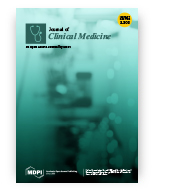Sustainable Production of Biosurfactant from Agro-Industrial Oil Wastes by Bacillus subtilis and Its Potential Application as Antioxidant and ACE Inhibitor
Dominika Ciurko, Żaneta Czyżnikowska, Anna Kancelista, Wojciech Łaba, Tomasz Janek
International Journal of Molecular Sciences
Ministerial score = 140.0
Journal Impact Factor (2022) = 6.208 (Q1)
 The microbial conversion of agro-industrial oil wastes into biosurfactants shows promise as a biomass refinery approach. In this study, Bacillus subtilis #309 was applied to produce surfactin using rapeseed and sunflower cakes, the most common oil processing side products in Europe. Studies of the chemical composition of the substrates were performed, to determine the feasibility of oil cakes for surfactin production. Initially, screening of proteolytic and lipolytic activity was performed to establish the capability of B. subtilis #309 for substrate utilization and hence effective surfactin production. B. subtilis #309 showed both proteolytic and lipolytic activity. The process of surfactin production was carefully analyzed by measurement of the surfactin concentration, pH, surface tension (ST) and emulsification index (E24). The maximal surfactin concentration in the sunflower and rapeseed cake medium reached 1.19 ± 0.03 and 1.45 ± 0.09 g/L, respectively. At the same time, a progressive decrease in the surface tension and increase in emulsification activity were observed. The results confirmed the occurrence of various surfactin homologues, while the surfactin C15 was the dominant one. Finally, the analysis of surfactin biological function exhibited antioxidant activity and significant angiotensin-converting enzyme (ACE)-inhibitory activity. The half-maximal inhibitory concentration (IC50) value for ACE inhibition was found to be 0.62 mg/mL for surfactin. Molecular docking of the surfactin molecule to the ACE domains confirmed its inhibitory activity against ACE. Several interactions, such as hydrophobic terms, hydrogen bonds and van der Waals interactions, were involved in the complex stabilization. To the best of our knowledge, this is the first report describing the effect of a lipopeptide biosurfactant, surfactin, produced by B. subtilis for multifunctional properties in vitro, namely the ACE-inhibitory activity and the antioxidant properties, using different assays, such as 2,2-azinobis (3-ethyl-benzothiazoline-6-sulfonic acid (ABTS), 2,2-diphenyl-1-picrylhydrazyl (DPPH) and ferric reducing antioxidant power (FRAP). Thus, the ACE-inhibitory lipopeptide biosurfactant shows promise to be used as a natural antihypertensive agent.
The microbial conversion of agro-industrial oil wastes into biosurfactants shows promise as a biomass refinery approach. In this study, Bacillus subtilis #309 was applied to produce surfactin using rapeseed and sunflower cakes, the most common oil processing side products in Europe. Studies of the chemical composition of the substrates were performed, to determine the feasibility of oil cakes for surfactin production. Initially, screening of proteolytic and lipolytic activity was performed to establish the capability of B. subtilis #309 for substrate utilization and hence effective surfactin production. B. subtilis #309 showed both proteolytic and lipolytic activity. The process of surfactin production was carefully analyzed by measurement of the surfactin concentration, pH, surface tension (ST) and emulsification index (E24). The maximal surfactin concentration in the sunflower and rapeseed cake medium reached 1.19 ± 0.03 and 1.45 ± 0.09 g/L, respectively. At the same time, a progressive decrease in the surface tension and increase in emulsification activity were observed. The results confirmed the occurrence of various surfactin homologues, while the surfactin C15 was the dominant one. Finally, the analysis of surfactin biological function exhibited antioxidant activity and significant angiotensin-converting enzyme (ACE)-inhibitory activity. The half-maximal inhibitory concentration (IC50) value for ACE inhibition was found to be 0.62 mg/mL for surfactin. Molecular docking of the surfactin molecule to the ACE domains confirmed its inhibitory activity against ACE. Several interactions, such as hydrophobic terms, hydrogen bonds and van der Waals interactions, were involved in the complex stabilization. To the best of our knowledge, this is the first report describing the effect of a lipopeptide biosurfactant, surfactin, produced by B. subtilis for multifunctional properties in vitro, namely the ACE-inhibitory activity and the antioxidant properties, using different assays, such as 2,2-azinobis (3-ethyl-benzothiazoline-6-sulfonic acid (ABTS), 2,2-diphenyl-1-picrylhydrazyl (DPPH) and ferric reducing antioxidant power (FRAP). Thus, the ACE-inhibitory lipopeptide biosurfactant shows promise to be used as a natural antihypertensive agent.
DOI:10.3390/ijms231810824









